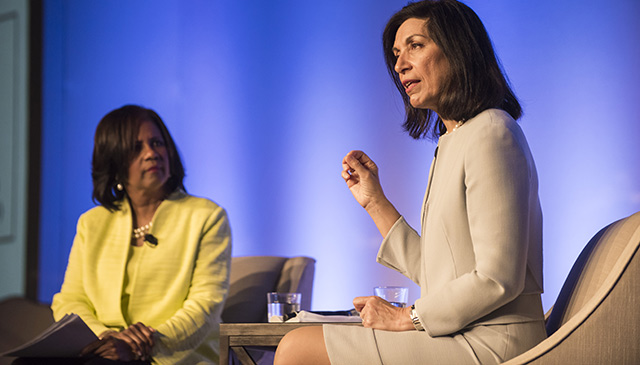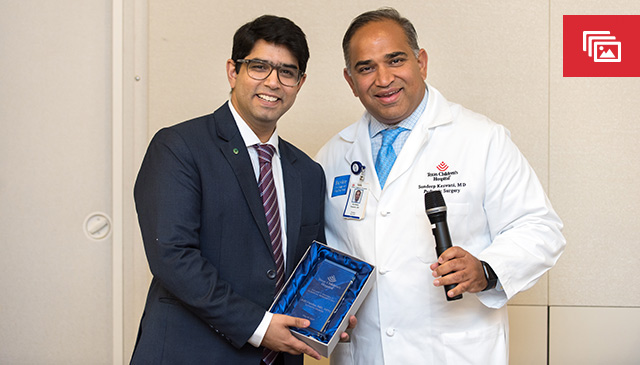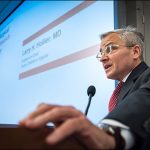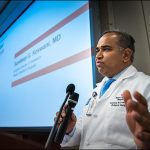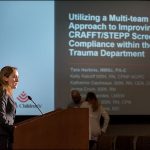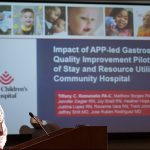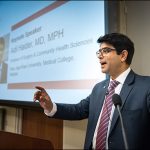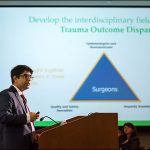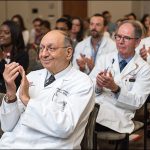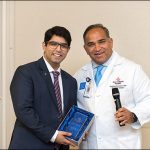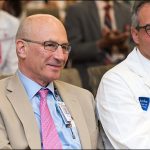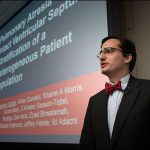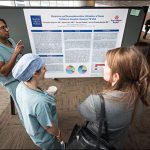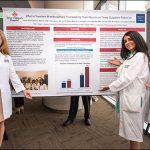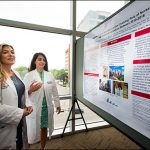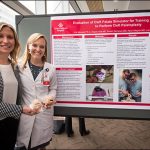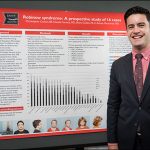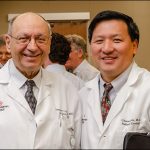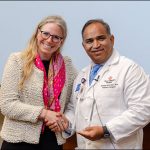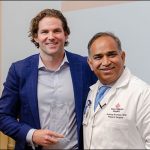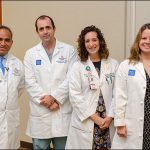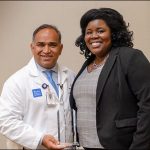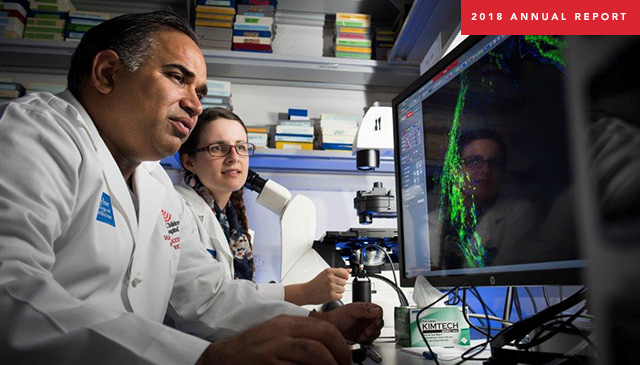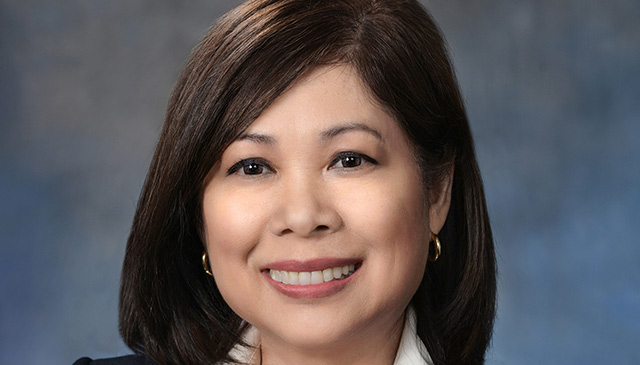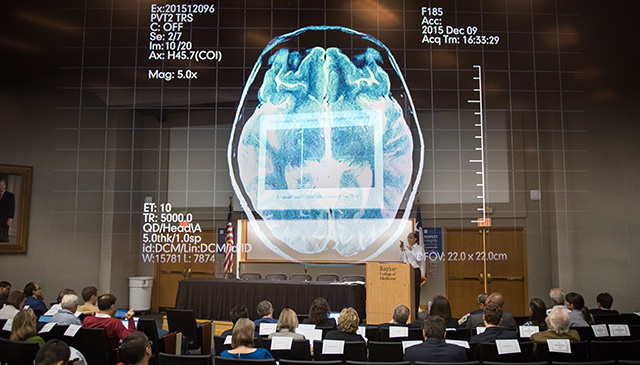October 23, 2018
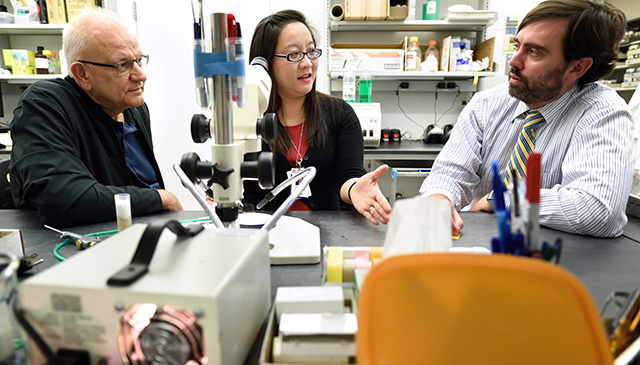
The New England Journal of Medicine (NEJM), one of the nation’s most respected peer-reviewed medical journals, has released a new study highlighting the groundbreaking work being done by the Undiagnosed Diseases Network (UDN), an National Institutes of Health-funded research consortium that includes the Jan and Dan Duncan Neurological Research Institute (NRI) at Texas Children’s Hospital, Baylor College of Medicine, Stanford University and other institutions.
Identifying the genes responsible for rare or unknown disorders using traditional approaches is time-consuming work and can take years, or sometimes even decades. And though genetic sequencing is now a routine part of the care people receive for these types of disorders, many patients are still left without a diagnosis. According to the NEJM study, the collaborative UDN model may already be changing that paradigm.
The study reports that the UDN defined 31 entirely new syndromes, and of 382 completed evaluations, 132 patients received diagnoses, a rate of 35 percent – all in just 20 months. The study also found that of the new diagnoses, 37 percent led to non-therapeutic changes in care, such as narrowing of diagnostic testing, and an amazing 21 percent led to changes in therapies for patients.
“This is a major accomplishment in genomic medicine and a giant step forward for these patients and their families,” said Dr. Huda Zoghbi, director of the NRI.
The UDN was established in 2014 with the mission of providing answers for the millions of patients and their families affected by mysterious and rare conditions, but who, after years of extensive testing, still hadn’t received a diagnosis.
The NRI and Baylor have been at the forefront of discovery in the UDN since its inception, jointly serving as one of seven original clinical sites, where doctors and health care providers, ranging from neurologists, immunologists, nephrologists, endocrinologists and geneticists, come together to help find the cause of participants’ symptoms. Baylor, one of the UDN’s two original sequencing cores, currently acts as the network’s sole DNA sequencing site. The NRI and Baylor were also selected to serve as the UDN’s first Model Organism Screening Center (MOSC), which was spearheaded by NRI investigators Drs. Hugo Bellen, Shinya Yamamoto and Michael Wangler.
“The UDN recognized that the resources we had in place and our high throughput made us the ideal candidate to serve as a MOSC site,” Bellen said. “Because of our success with model organisms and the appreciation physicians have for our work, there will likely be a proliferation of MOSC sites in the future.”
In-depth fruit fly studies at the MOSC have helped physicians and scientists identify genes responsible for rare and undiagnosed disorders, leading to the diagnosis of some of the UDN’s most difficult cases. This collaborative effort, which also includes the University of Oregon, has already directly influenced how clinicians care for patients – patients like Avery Reilly.
At only a few months old, Avery began showing signs of a neurologic condition. She could not sit until age 3 or crawl until age 5, and today she cannot walk or speak. An appointment with Texas Children’s neurologist Dr. Timothy Lotze revealed Avery had poor muscle tone, which was delaying milestones. That initial appointment led to years of doctor visits and countless tests, all of which failed to reveal the cause of Avery’s developmental and speech delays.
Then in 2014, the Reillys heard about the NRI’s involvement with the UDN and submitted Avery’s case. For the first time in years, the family had hope. Using exome sequencing, researchers discovered Avery had a new type of genetic mutation. Then a team at the MOSC, led by Wangler, studied the mutation in a fruit fly model to see how the genes were affected. At long last, the Reillys had a diagnosis. What’s more, the discovery of Avery’s mutation led to a change in her medications, which could help slow the progression of her disease.
“The fact that we are able to help the UDN accelerate science to find actionable changes in therapies is very exciting,” said Zoghbi. “Helping people, and working to solve severe medical problems through basic research, and through unfettered collaboration, is what our work is all about.”
The NEJM study is the first to provide a detailed description of the inner workings of the UDN. It presents an in-depth analysis of the referral and acceptance patterns, diagnoses, impact rates and follow-up scientific investigations of 1,519 cases that were referred to the UDN in the last two years.
As the study points out, the most unique feature, and perhaps the biggest contributor toward UDN’s success, is its model of multi-institutional collaborations. Teams of researchers and physicians from participating institutions all over the nation leverage their multidisciplinary expertise and resources to quickly find specific diagnoses for patients with extremely challenging clinical cases, with no additional cost to the patients.
In addition to the original clinical sites and sequencing cores, the UDN also included a coordinating center as part of its phase I deployment. In 2015, a web-based portal, the UDN Gateway, was launched for patients and families to participate in UDN. The network recently expanded its footprint from seven to 12 clinical sites and also added a central biorepository, a metabolomics core and a new MOSC site.
Though the UDN’s larger focus is currently gene discovery, it’s the work being done at the NRI and Baylor that will set up the network’s next evolution.
“Once a gene is discovered, it’s natural that the focus should shift to finding out what the genes do, what the molecular mechanisms are, if they’re linked to other diseases, or if they can be manipulated with drugs,” Bellen said. “That’s what we’re doing at the NRI and Baylor now, and that will be instrumental in the next phase for the UDN. When that time comes, we’ll be ahead of the curve.”
Learn more about the recent research breakthroughs and patient success stories from the UDN and MOSC.
About the New England Journal of Medicine
For over 200 years, the New England Journal of Medicine has rigorously vetted and compiled the latest medical research in support of physicians and their patients. From the first uses of anesthesia to the most recent cardiology and cancer treatments, the New England Journal of Medicine has helped generations of clinicians enhance their knowledge and improve patient care.
Today, with rigorously peer-reviewed research, topical reviews, interactive clinical content and cases, the New England Journal of Medicine is the trusted source for essential findings in medicine.
